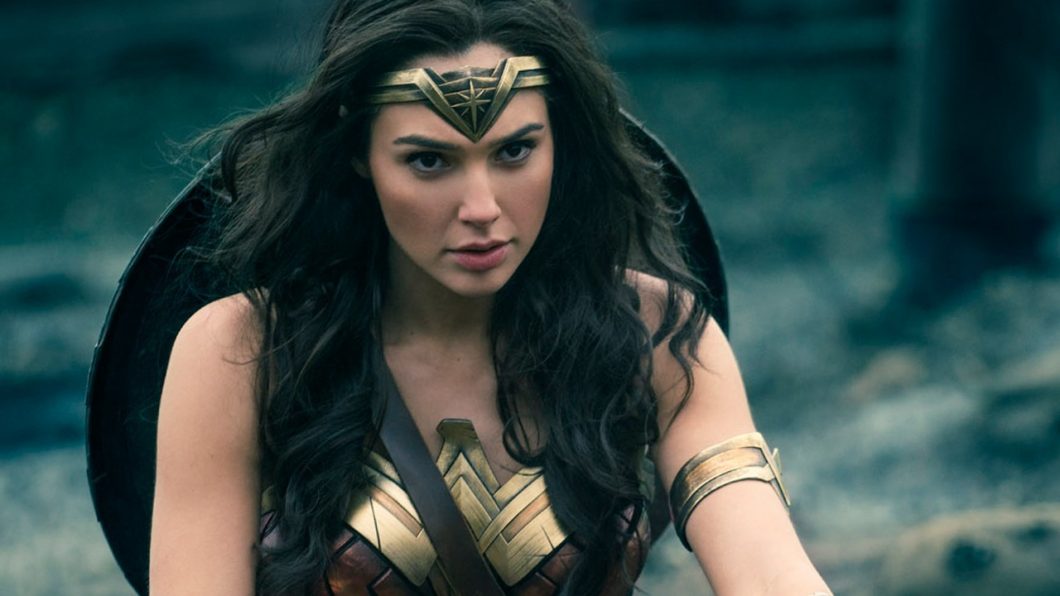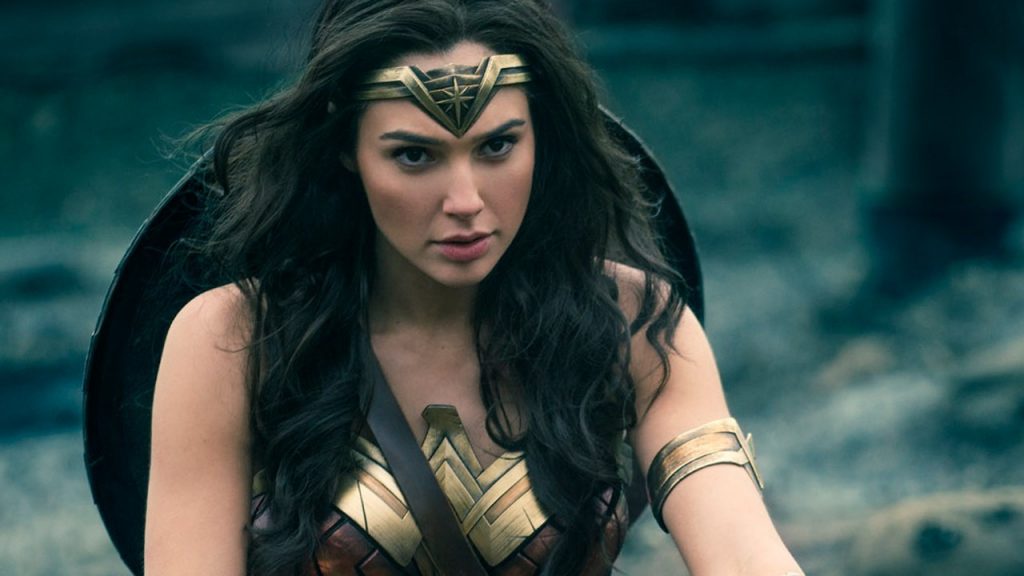The Rings of Power assumes that the audience's progressive virtues eliminate the need for a good story.
Wonder Woman: A Movie About Men
Some of my best friends are men, so no offense. But Wonder Woman has me asking, what’s the point? What good are they?
In the blockbuster Wonder Woman, our heroine (played by the magnificent Gal Gadot) is a rewritten version of Artemis/Diana, from Greek and Roman myth. The Wonder Woman story makes Diana also a princess of the Amazons, the tribe of female warriors from classical myth. We follow the goddess of the hunt through the main plot. Will she save man from war, and is man worth saving? And then there’s the subplot. Will she fall for a man, and are men worth falling for? In this case, the romantic interest is a good little soldier and sidekick, Steve Trevor (the expendable Chris Pine).
The critics’ feminist triumphalism about the goddess and her female director (Patty Jenkins) has left them no time to bother with the theme of this movie. Wonder Woman puts it to us: Is “man” worth the trouble? The word works double time in the film. It expresses (only to soothe) the fear that haunts males, and human beings, that they are not worth it.
First, let’s consider men as males. We spend the first half hour in the charmed female-only paradise of Themyscira, Hollywood’s declawed version of the Amazon legend. The peace-loving but perpetually sparring and spartanly clad Amazons provide a seductive spectacle. Given the myth of female bonding (some mystical connection supposedly caused by shopping together), men sometimes wonder what women do when in our own company. At the risk of betraying a secret, I assure my gentlemen readers, usually nothing as fun as play-fighting in the ancient version of yoga pants.
So, one may ask—whose fantasy is Themyscira? And whose fantasy is Wonder Woman?
Well, duh. The purportedly feminist film panders to the 50-plus percent of the post-pubescent population who will enjoy the stunning all-female calisthenics for reasons not needing further articulation. But that answer isn’t interesting. The key is that Artemis/Diana—the tomboy goddess, the virgin huntress—symbolizes a permanent male fantasy that is also a permanent male anxiety. After all, given the overwhelming power of the presence of the female body, how could men not worry about women being indifferent to them?
Men sense that women don’t want them quite the way they want women, and so they fear that if they can’t supply the material goods of provision, protection, and procreation, women will not have much use for them. (These fears might especially trouble the men who are inordinately interested in comic books and superheroes.)
The Amazon legend of female self-sufficiency, now used to express a feminist fantasy, primordially symbolizes this timeless male vulnerability. Timeless, but also timely: after all, technological, economic, and political modernity have allowed women to approach Amazonian autonomy—at least vis-à-vis their male intimates. Outfitted with a dog, a house alarm, employment, and legal rights, a lucky and motivated American woman can outsource most husbandly tasks, excepting procreation. Industrial technology has made obsolete many jobs for which men are more suited than women; these jobs are being replaced by service professions for which women are at least equally suited. What good are men, if modernity makes this Wonder Woman’s world?
This is a problem to which feminists should attend. Displays of la force féminine just as easily lead to misogyny as to feminist victories and celebrations. For an odd example, take William Marston (1893-1947), a female supremacist and the kinky creator of Wonder Woman. In his incoherent refashioning of the Artemesian myth, women were goddesses above him, but somehow still interested in serving him. In real life, his two partners supported him rather slavishly—financially, professionally, and sexually. “Marston had a sweet thing going,” Katha Pollitt notes, “two remarkably smart, adoring women to cater to his every need, each apparently believing she’d landed in feminist heaven.” Marston ended up dominating women via his fantasy about their superiority.
Of course, from honor killings to female genital mutilation, the male response to the feminine force is often uglier than that. At the very least we should not be surprised when, in our own culture, female- and foreigner-friendly free market economics elicits protectionist expressions from marginalized males at the ballot box.
Wonder Woman revels in the feminine force. Does that make it a feminist movie? The press is rejoicing—it scored the highest grossing opening weekend for a female-directed film, and even with a woman lead it has succeeded with traditional fans of superhero sagas. Soccer moms have been flocking to the theater to celebrate themselves and their daughters.
In fact, this is a post-feminist movie. Diana can’t be a feminist hero because her chiseled shoulders are chip-free. Having never met a man, she has been raised innocently pure of any male dominance. Jill Lepore of the New Yorker misses the point when complaining the film isn’t feminist enough: it dithers around with “an uninteresting plot about the Kaiser and chemical weapons” while failing to pay its debts to “the real women” of the 20th century who fought “for representation, contraception, and equality.”
Lepore is looking for politics in all the wrong places. Not only is this a superhero movie (not a PBS documentary), it is more about Diana’s post-feminist love affair with Steve than about the Kaiser. The subplot sees a problem that many feminists, stuck in last century’s battles, ignore: What might become of romance after the final female victory?
The movie confronts that male trepidation symbolized by Artemis and the Amazons. Diana tells Steve that, as far as she’s read, “men are essential for procreation but, when it comes to pleasure, [sigh] unnecessary.” The film voices this concern to allay it. Diana falls for Steve, whose virtues show that man (in both senses) is worth it—or at least the above-average specimens are. In another post-feminist move, the film expresses the hope that men will respond to the feminine force by being, like Steve, manly—useful, respectful, and courageous, at least on the whole.
Christina Cauterucci at Slate sees the romance “as a ‘no homo’ response to the heroine’s inherently queer backstory.” Of course. But more deeply, Wonder Woman refashions the mythic Diana for its own purposes. “The true Artemis is remote and intimidating,” Camille Paglia writes, complaining that artists fail to portray the pure Artemisian ideal that one finds in the classics. “As an independent female impulse,” adds Paglia, Artemis “seems to have triggered a persistent negativity among male artists, who turn her swift and sudden action into fleshy passivity.” Softening her body, they balk at chiseling the muscles or painting the proper tomboy form. They bend the virgin huntress toward them, away from the threat of disregard. In something of the same way, the movie fails Artemis (and the brutal, men-slaughtering Amazons of legend). But this betrayal of myth also serves statistical reality: Most women, however wonder-worthy, desire male romantic partnership.
Autonomy, it turns out, is not all women want. What moderates feminism is that even feminists are relational beings who care not only for male partners, but also for their male children and friends. What should further moderate feminism is the fact that females are capable of being as rotten as males—taking us to the other half of the film’s reflection on man, as in, human.
“Be careful in the world of men, Diana,” says her mother Hippolyta as the goddess leaves the island paradise. “They do not deserve you.” Wonder Woman symbolizes not merely the feminine, but the divine in its relation to mankind. After all, men can hardly be good for anything when humanity itself isn’t. Gender aside, the main plot is theological. The press has missed the boat here, also. Most responses to Gadot’s nationality (and patriotism) have ignored how Hebraic faith figures in the film (a different question from whether Israeli politics does).
True to the genre, the film recounts the superhero’s origins, and this is surely to set up endless sequels. The daughter of Zeus and Amazon Queen Hippolyta, Princess Diana leaves Themyscira in order to hunt and kill the god Ares during the First World War. In the stories fed Diana as a child, Zeus created man good, in his own image; but his rebellious son Ares, god of war, having killed the other Olympian gods, now plagues humanity with strife and bloodshed.
The movie’s set-up expresses the feeling that God has abandoned the world—a sense apropos for our Christ-haunted culture, but also perennially human. The war intrudes upon the Amazonian Eden, presented as a citadel somewhere in the Mediterranean, for Zeus’s favorite people, who have been given extra responsibilities (and who seem to mimic Gadot’s Israeli accent). Our armed savior Diana, entering the world of men, has humbled herself so that she might liberate goodness in a cosmos no longer structured by her father. Thus the film underlays its adjusted Olympian myths with Biblical images—bending the pagan symbol-systems for Judeo-Christian purposes, broadly conceived.
This is a Zeus rewritten by Hollywood in the image of the Hebrew creator-God, with Diana as his anointed child and Ares cast as Lucifer. The predictable plot ensues. The genre predestines it—a superhero needs a supervillain.
Or perhaps it is the other way around. Imagining that some person (or group, or personified global trend) is the singular source of human travails can sometimes lead to people imagining themselves as superheroes—or as needing them. And might this not be one source of the quasi-religious, righteous fervor of the activist type in our contemporary politics? Superhero movies are tedious partly for this supervillain conceit. Real villains tend to be, of course, less super, more pathetic (and nonetheless villains for that).
Thankfully Diana discovers, upon killing Ares, that evil cannot be traced to a single metaphysical source. The denouement undoes the myth taught her by her mother that man is naturally good, and was merely distorted by the enemy. While Diana begins as a reactionary against Ares, she discovers that her enemy is also driven to restore order, to extirpate evil. Diana learns from him that this would require human annihilation. Love of purity and love of mankind are not thoroughly consistent. Maybe a god, the movie suggests, would be right to destroy us. (See Yahweh’s words to Noah, Genesis 6: 12-13.)
When she rejects Ares’ misanthropy, she does so by losing the naïveté of her philanthropy. The movie might as well have quoted Aleksandr Solzhenitsyn: “The line dividing good and evil cuts through the heart of every human being.” While she ends up no longer aiming to save the world or restore a ruined paradise, she recognizes that human order needs—and is worth the effort of—continual repair.
Since the original comic book heroine’s coming of age was World War II, one may ask why the filmmakers chose World War I instead. Our country has many monuments commemorating the “the war to end war,” built before the world knew that, with Hitler and Stalin, far worse horrors lay just around the corner. These monuments commemorated the loss of life, but for us they signify also the loss of an illusion.
We have something of the same feeling watching the heroic and childlike Diana, with her simple faith that this victory will change the cosmos forever. Even as she wins, the audience feels her disillusion coming. We know in advance that ending the “war to end war” didn’t. Dropping the Christ-figure imagery, Diana ends as another work-a-day hero. Just that chastening of her ambitions seems the point. It’s a nice theme for a superhero movie.
Wonder Woman has the faults typical of superhero flicks, including plenty of stupidity and tedious CGI action in grandiose battle scenes with melodramatic music. No one seeing such a movie deserves to be made to think. No mortal, male or female, deserves Gadot’s goddess Diana. Luckily, people don’t always get what they deserve.




